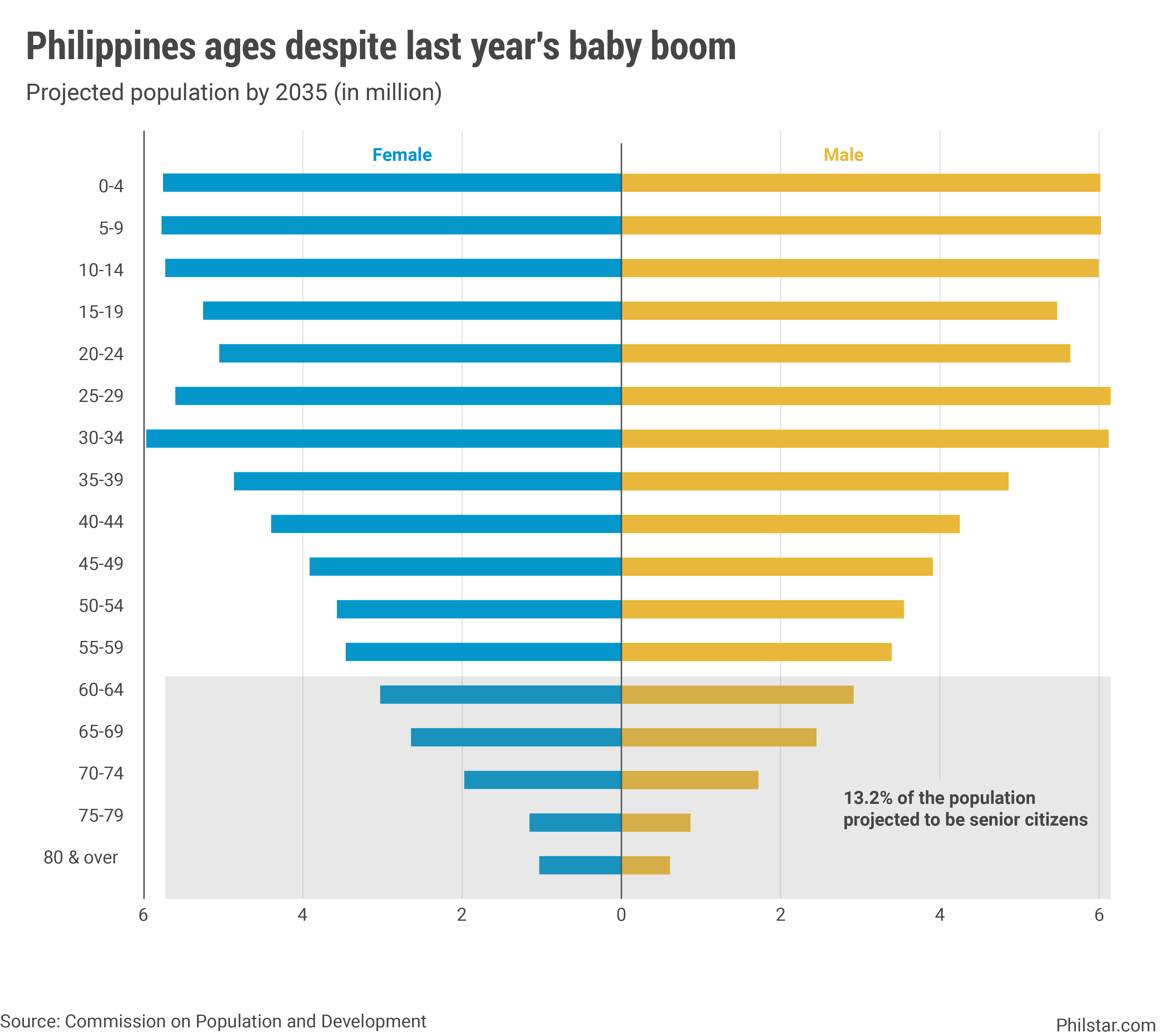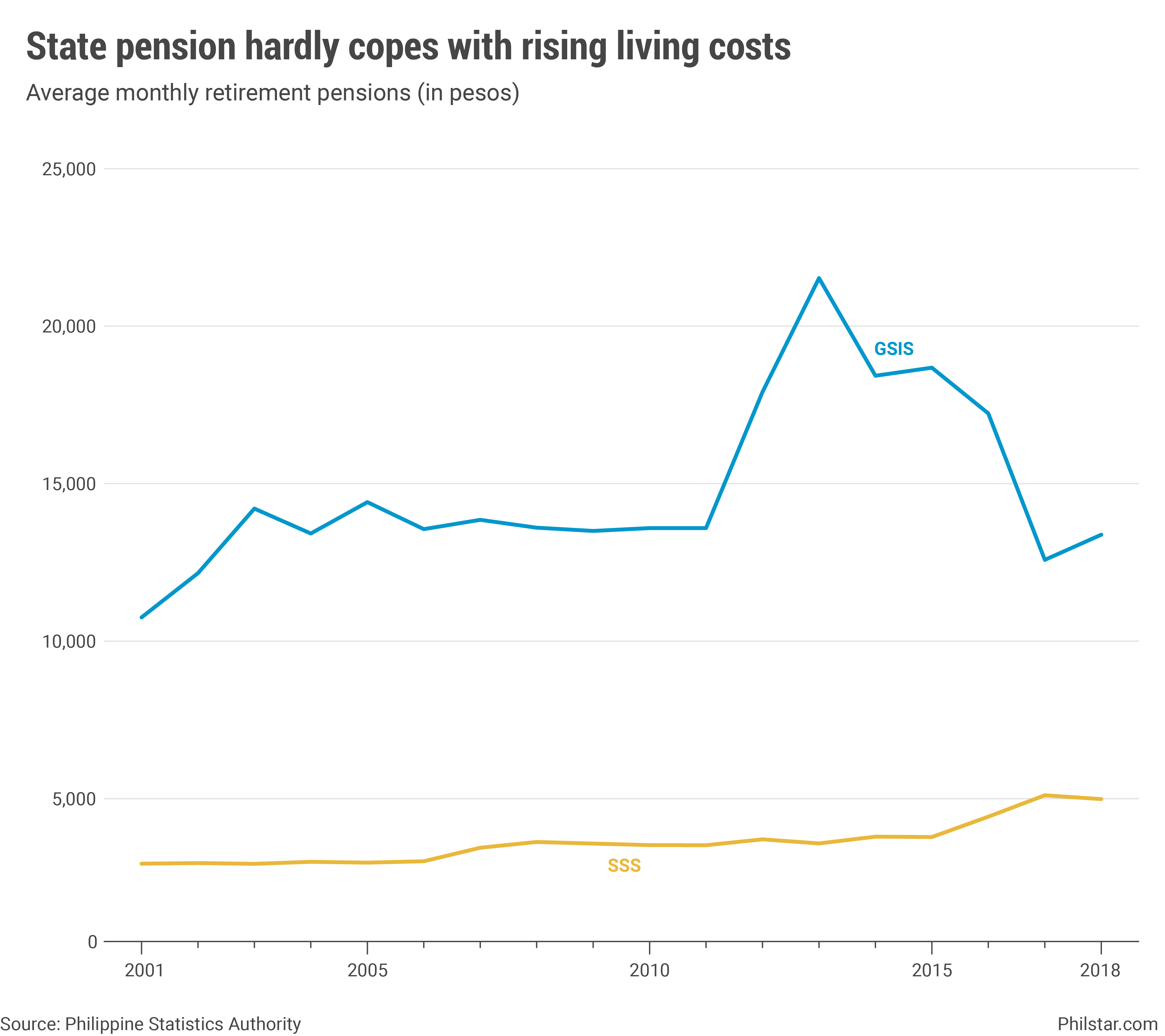Philippines braces for 'demographic trap' with dividend debunked

MANILA, Philippines — Rosemay Cabacang, 31, has four jobs including being a publication specialist, a part-time online writer and on top of that, she recently opened her own food business. But she also hardly has any savings.
The youngest of three siblings, Cabacang lives with her also working partner, their six-year-old son and his mother whose meager pension as former government employee hardly pays for the bills. “I also had to still give to my mom since she still has needs,” Cabacang said in an online exchange.
“Even if she has her pension, it’s still not enough given the rising costs of basic necessities,” she said.
But apart from sustenance, Cabacang, possibly like any other Filipino, sees regular parent support more as “embedded in our culture as Filipinos.” This is a reality for majority of the Philippines’ young workforce now also burdened with catapulting the Southeast Asian economy out a pandemic-induced slump this year.
With a median age of 25, Philippines was supposedly seen able to quickly jumpstart the economy through its army of young workers long touted as a demographic dividend. But the opposite seems to be happening.
After registering the worst economic performance in the region, a delayed vaccine rollout and threat of fresh lockdowns, two “demographic traps” are becoming huge roadblocks to the Philippines’ long-term recovery: an ageing population and high fertility rate. “We have to deal with two problems at once,” said Juan Antonio Perez III, executive director at the Commission on Population and Development.
At face value high fertility seems to bode well with rising older age groups, after all aging South Korea and Japan are having a hard time encouraging their people to have more babies. But this is not the case at home, where an average of 2.5 babies per woman a year is stretching limited public resources for education, healthcare and other social services.
By 2035, when most babies born now would still be attending school, 13.2% of the population would be turning 60 years old or older requiring additional health and pension support. It’s a tragedy waiting to happen, Perez said, as an earning workforce financing pension costs begins to get slowly outnumbered.

Insufficient pensions
As it is, retirement pensions from the Social Security System (SSS) and the Government Service Insurance System (GSIS) currently fall below the present minimum wage. In 2018, the latest period for which data is available, average SSS pension for former private workers amounted to P4,984, while that of GSIS for former government employees reached P13,379.
On top of that, Perez added that only 1.7 million of the current 10 million senior citizens are covered by existing pension systems. “So you have more than 50% of our senior citizens living without a pension, dependent on their families,” he said.

The government solution is the fortify the state pension system. After granting P2,000 increase in SSS pensions, the Duterte administration enacted the Social Security Law in 2018 that mandated yearly increase in contributions to counter rising pension costs. Legislators are now moving to postpone succeeding premium increases because of the pandemic, but Finance Secretary Carlos Dominguez III has opposed this.
Another fix is to the strengthen the implementation of the controversial reproductive health law. The Duterte administration had hoped to gain ground on this when the Supreme Court lifted the halt order against the measure in 2018, but the pandemic thwarted these efforts. And so was the enforcement of universal healthcare that could have insured those not covered by SSS or GSIS.
The population commission estimated 2.5 million people would be born this year out of last year's lockdowns that virtually gave everyone more time to make babies.
For Ernesto Pernia, former socioeconomic planning chief, the pandemic only revealed that the Philippines has too much on its plate. “Disasters like typhoons and the public health crisis already have our hands full. That’s a sign we are already beyond carrying capacity,” he said.
The good news is the surge is expected to be a blip, and unlikely to stop a downtrend in fertility poised to reach the ideal 2.1 babies per woman by 2025. But Perez said in order to avoid a population problem, the replacement rate should be reached much earlier. “There’s still a window of opportunity, but it’s fast closing,” he said.
- Latest
- Trending

























